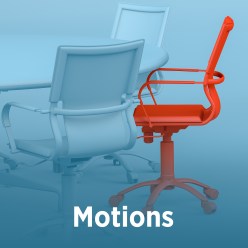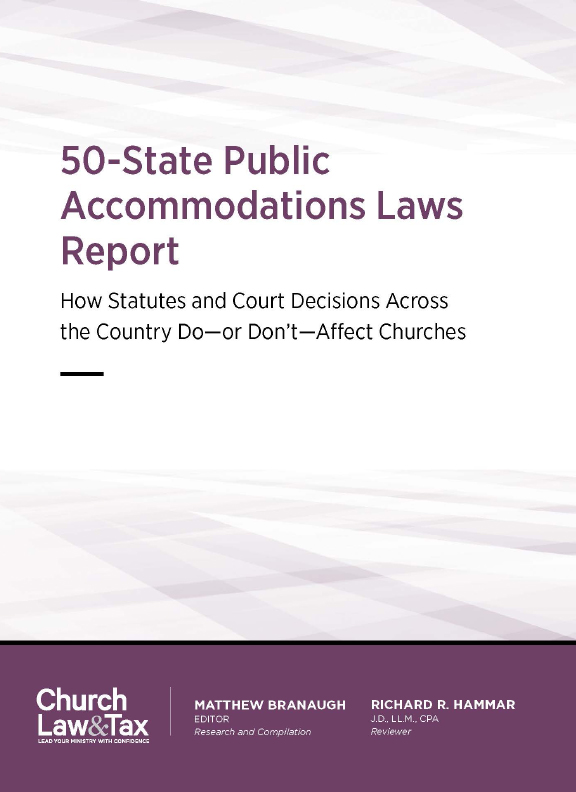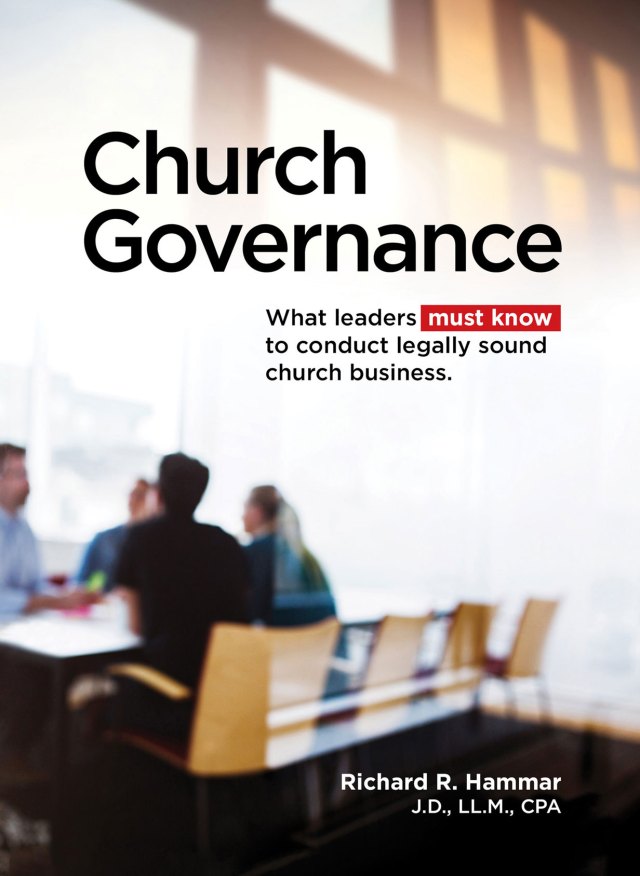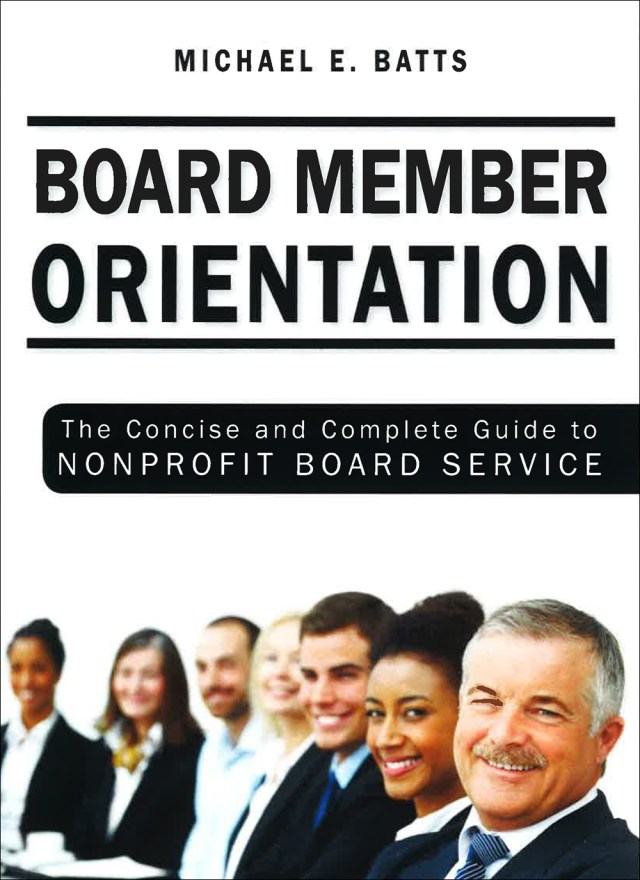Have you ever attended a business meeting and wondered what exactly is happening when people make motions? Maybe you’ve wondered why it’s necessary at all. Or perhaps the process is generally familiar to you, but you get tripped up from time to time on the little details of how motions work.
Whatever your level of understanding, this article explores four questions to help ensure your motions follow proper parliamentary procedure.
What is a motion?
A motion is a proposal for specific action. It’s the vehicle by which a group makes an official decision to do or not do a certain thing.
If you think generally about how decisions are made when more than one person is involved, they typically follow a standard format: (1) they start with the proposal of an idea (e.g., “Let’s get Taco Bell for lunch!”); (2) they often involve some level of discussion (e.g., “McDonalds is better than Taco Bell!”); and (3) they end with individuals expressing their choices.
Motions are the way of formalizing that process in a group that is conducting official business.
There are two types of motions: main motions and secondary motions. Main motions propose substantive action—e.g., “I move that the church repave the parking lot.” Secondary motions propose procedural action related to the group’s meetings—e.g., “I move to refer this main motion to a committee,” or “I move to adjourn.”
How does a member make a motion?
To make a motion, ask to be recognized by raising your hand or going to a microphone, and then say the words, “I move that. …” Follow those words with your substantive or procedural proposal.
There are a few pitfalls to avoid here.
- Avoid discussing the topic of your motion before you make it. In other words, if you’re frustrated that the church parking lot has potholes and cracks, save your expression of that frustration until after you’ve made the motion and the chairperson has asked if anyone would like to discuss the proposal.
- Avoid using phrases like “I think we should” or “I’ve been thinking about” to introduce a motion. These phrases aren’t clear indicators of what you’re trying to do, and they may not result in your idea actually being put to the group for discussion. “I move that” is always the best place to start.
- Avoid making a main motion when there is another main motion already being discussed. This rule supports efficiency: Discussing one topic at a time and then voting on it tends to streamline business and lessen confusion.
What happens to a motion after it is made?
After a member makes a motion, there are three events that should occur before the proposal becomes an official action taken by the group.
Second
A second is the word used in business meetings to indicate that more than one person thinks an idea is worth the group’s time. One member makes a motion, and another member has to say “second” for the motion to get any traction.
Note. When a member says “second,” it doesn’t necessarily mean that the member agrees with the idea proposed. It simply means that he or she thinks the group should talk about the idea.
Discussion
Once a second is made, the chairperson of the meeting should repeat the motion and then ask if the members want to discuss it. There are a few secondary (procedural) motions where discussion is not permitted, but discussion is allowed on all main motions.
Typically, the chairperson should say the following words, or something similar, to invite discussion: “It has been moved and seconded that the church repave the parking lot. Is there any discussion?”
To participate in discussion, members should seek recognition by raising their hands or coming to a microphone, then wait for the chairperson to recognize them, and then state their comments in favor of or in opposition to the motion that is before the group. Often, the chairperson will alternate between individuals in favor and in opposition.
According to Robert’s Rules of Order Newly Revised, the most well-known parliamentary authority and the rulebook most commonly used by churches, members can speak only two times, for ten minutes each time, on any issue, but alternative discussion limits can be adopted via the setting of special rules. After each speaker, the chairperson’s response to the member’s comments should simply be, “Thank you. Is there any further discussion?”
Ideally, the chairperson will keep his or her own views private. But to participate in the discussion, the chairperson should ask someone else to preside over that motion through the discussion and the vote.
Vote
When there is no more discussion on a motion, the chairperson should take a vote. Once a vote is taken and the results are tabulated, that is the group’s decision on that topic. If the motion is adopted, the group should proceed with the action proposed in the motion. If the motion is defeated, the group should continue with the status quo.
As for whether a topic can ever be proposed again if it is defeated, common business meeting procedure says that the topic is off limits until enough time has passed or circumstances have changed to allow the topic to essentially be a new one. In other words, a topic cannot be proposed and re-proposed because such continued discussion wastes the group’s time.
How do secondary motions work?
Secondary motions are motions that relate to the procedure of a group’s meetings. They are typically (but not always) made while a main motion is being discussed. Here are three examples of secondary motions.
- Amend. A proposal to change the words of the motion that the group is discussing
- Previous Question. A proposal to close discussion on a motion that the group is discussing and move directly to a vote on that motion with no further discussion (for additional insights, see my article, “4 Answers to Your Questions about ‘Previous Question,’” on The Law of Order blog)
- Refer to Committee. A proposal to refer a main motion to a smaller group for research and in‑depth discussion so that they can make a recommendation on a course of action to the full group
If a secondary motion is made while a main motion is being discussed, the secondary motion becomes the highest priority for the group, and the group must discuss and vote on that secondary motion before it goes back to the main motion. Here are three examples using the secondary motions listed above.
Example 1: Motion to Amend. While a group is discussing a main motion to repave the church parking lot, a member thinks that perhaps the church could improve the parking lot a little and go to less expense if it just relined the parking spaces. He or she could seek recognition and say, “I move to amend the main motion by striking ‘repave’ and inserting ‘reline.’”
This amendment would need to be seconded, and then the group would discuss and vote on whether to strike “repave” and insert “reline.” If the amendment is adopted, the group would then go back to discussing the main motion as amended. If the amendment is defeated, the group would go back to discuss the main motion as originally stated.
Example 2: Previous Question. While a group is discussing a main motion to repave the church parking lot, a member thinks that the discussion has gone on too long and the group needs to move business along. He or she could seek recognition and say, “I move the previous question.”
This motion (Previous Question) would need to be seconded, and then the group would vote on whether to stop discussing the main motion and move directly to a vote. The group would then vote on whether to stop discussing the main motion.
Unlike with most motions, the group would not discuss whether to stop discussing. And, for adoption of the motion to stop discussing, at least two-thirds of the members voting must vote in favor. If the motion to stop discussing is adopted, the group would move directly to a vote on the main motion with no more discussion. If the motion to stop discussing is defeated, the group would continue discussing the main motion.
Example 3: Refer to Committee. While a group is discussing a main motion to repave the church parking lot, a member thinks that perhaps the building committee should request proposals from different paving companies and research the overall pros and cons of the project. He or she could seek recognition and say, “I move to refer the main motion to the building committee to research the costs and benefits of the proposal and report back at the next regular business meeting.”
This motion (Refer to Committee) would need to be seconded, and then the group would discuss and vote on whether to refer the main motion to the building committee. If the motion to refer is adopted, the main motion would be referred to the building committee, and the group could move to discussion of a new topic. If the motion to refer is defeated, the group would go back to discussing the main motion as proposed.
Return to the series homepage.
For related infographics and downloadable resources from the author, visit The Law of Order blog at civility.co.





